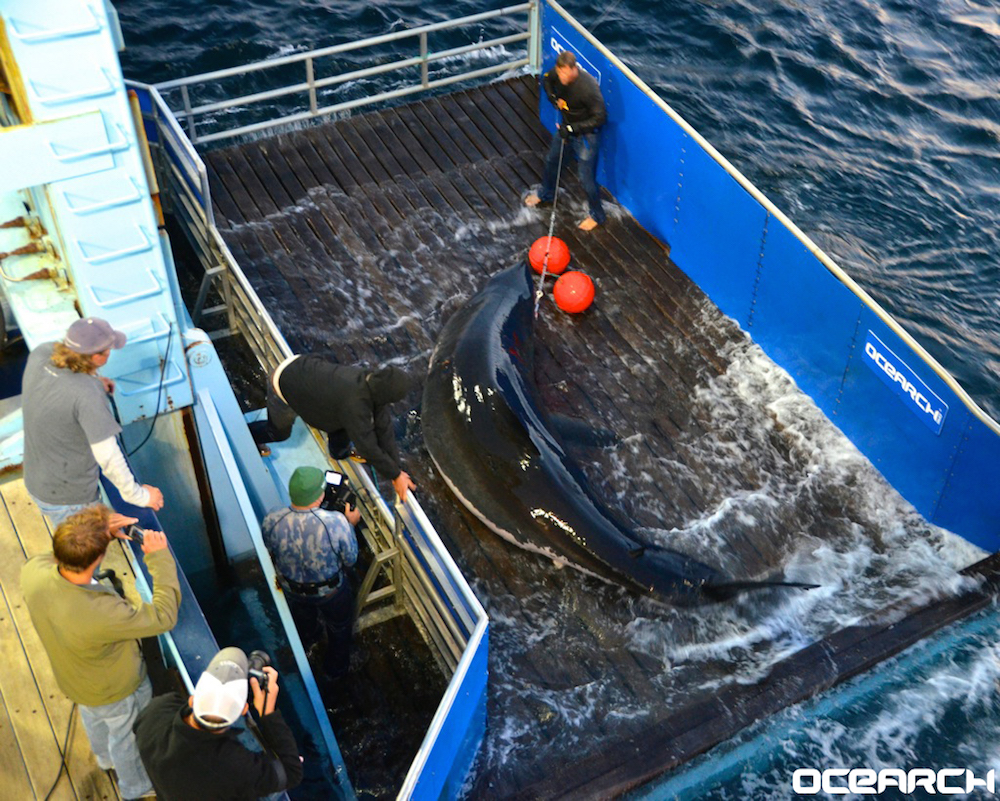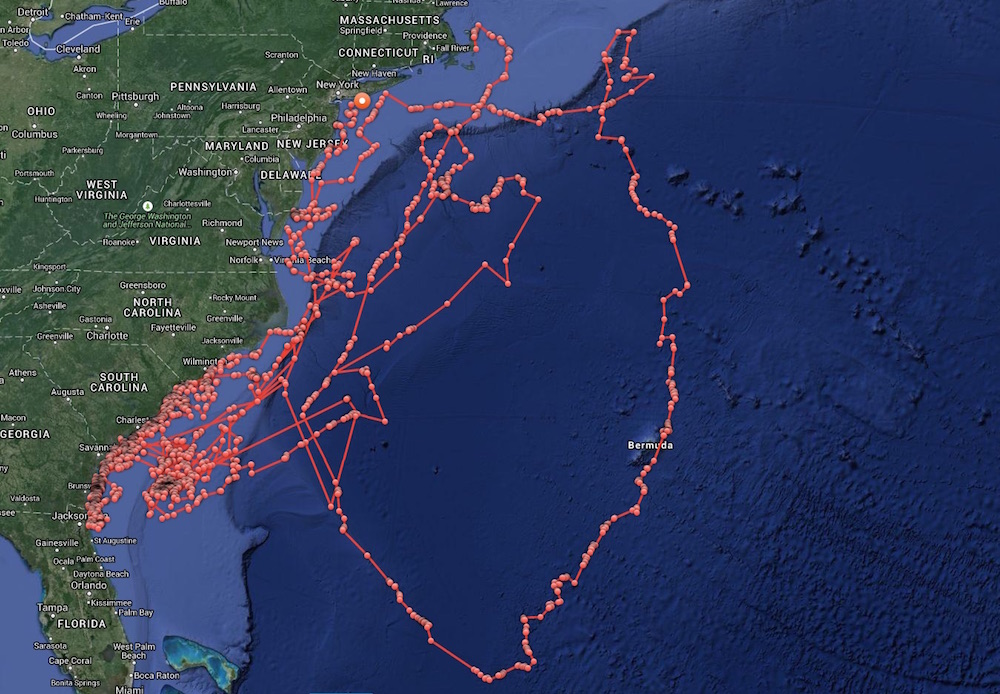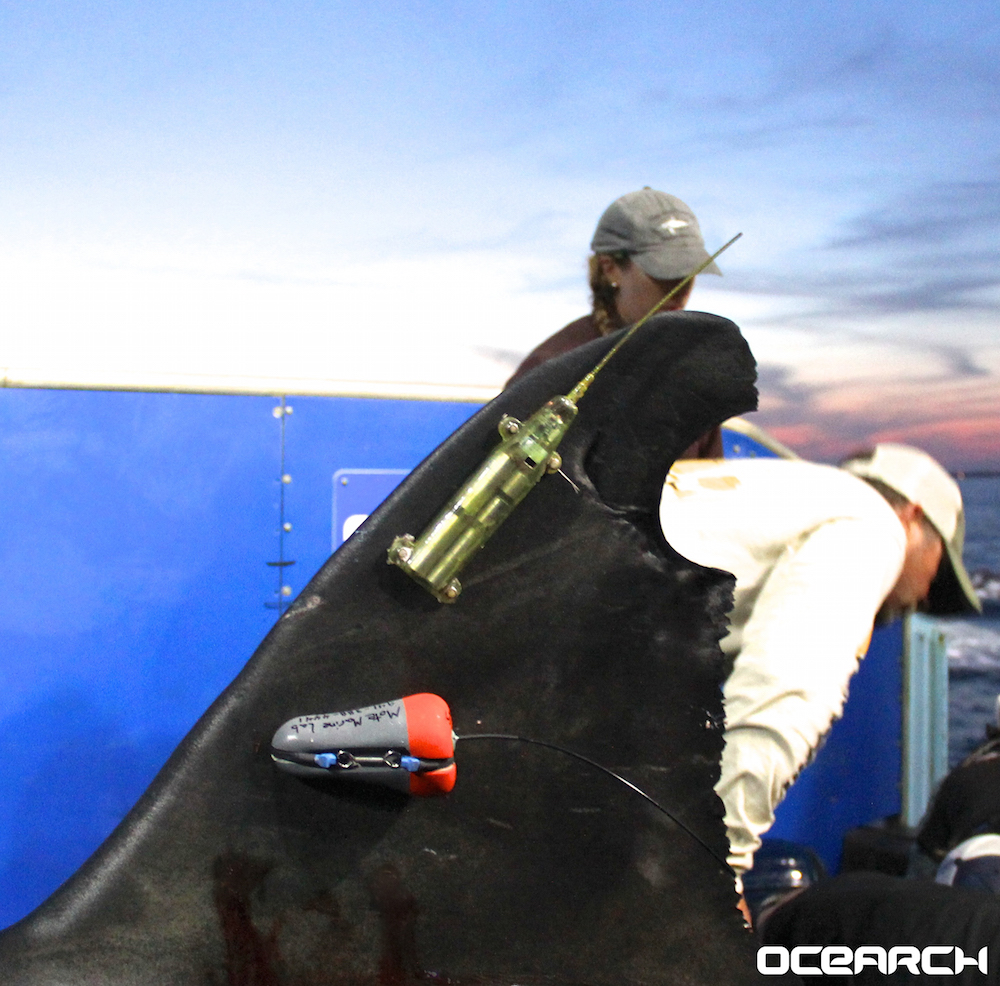Great White Shark 'Mary Lee' Spotted Near NYC

At 3,456 pounds (1,570 kilograms), a great white shark named Mary Lee may be one of New York's largest tourists.
The 16-foot-long (4.9 meters) shark is cruising off the coast of New York, and briefly surfaced near Long Island's Jones Beach at 8:37 a.m. EDT yesterday morning (April 12), according to a tracker on her dorsal fin.
Mary Lee is a valuable leviathan that can help researchers learn more about shark migration, reproduction and physiology, said Chris Berger, president of OCEARCH, a nonprofit research group that has tagged more than 150 sharks since 2007. [Image Gallery: Great White Sharks]
Researchers tagged Mary Lee in 2012 in Cape Cod, Massachusetts, and the battery in her tracker is still going strong. Every time Mary Lee's dorsal fin is above water long enough for the tracker to ping a satellite, a message is sent to OCEARCH so they can track the shark's whereabouts, Berger said.
Mary Lee is constantly on the go, traveling up and down the Eastern seaboard of the United States, from Florida to Massachusetts. She even visited Bermuda in 2013. The shark swam about 19,774 miles (31,823 kilometers) since her tagging, a distance equal to driving back and forth across the continental United States almost six times. And she's not slowing down during the New York leg of her journey: Over the past 24 hours, the shark has traveled about 97 miles (156 km), according to a map on OCEARCH.org.

Berger said he remembers when researchers found Mary Lee and tagged her on a specially designed platform aboard an OCEARCH vessel.
"She was majestic," he said. "There is an elegance about the way a very large shark like that moves in the water."
Sign up for the Live Science daily newsletter now
Get the world’s most fascinating discoveries delivered straight to your inbox.
Researchers aren't sure of the shark's age, but it's safe to say she's between 20 and 40 years old, meaning she could have pups, Berger said. Great white sharks are known to live to age 70, he added.

By studying sharks such as Mary Lee, researchers hope to learn more about the animals' reproductive behavior, such as where they mate and give birth. Scientists may also be able to observe whether sharks prefer to swim in specific places during certain seasons and life stages, or whether their routes are arbitrary.
"A big question is do white sharks display predictable and repeated movement patterns, or are they just random each year?" Berger said.
Mary Lee last visited the New York area in 2013, but this time she's swimming closer to shore. In the rare event that a person spots the shark, Berger advises people to give her space, both for their safety and hers.
People can track Mary Lee and other tagged sharks online at OCEARCH.org or using the free Global Shark Tracker application made for iPhones and Androids. Fans of Mary Lee can also keep up with her on Twitter @MaryLeeShark, which has about 36,400 followers.
Follow Laura Geggel on Twitter @LauraGeggel. Follow Live Science @livescience, Facebook & Google+. Original article on Live Science.

Laura is the archaeology and Life's Little Mysteries editor at Live Science. She also reports on general science, including paleontology. Her work has appeared in The New York Times, Scholastic, Popular Science and Spectrum, a site on autism research. She has won multiple awards from the Society of Professional Journalists and the Washington Newspaper Publishers Association for her reporting at a weekly newspaper near Seattle. Laura holds a bachelor's degree in English literature and psychology from Washington University in St. Louis and a master's degree in science writing from NYU.









